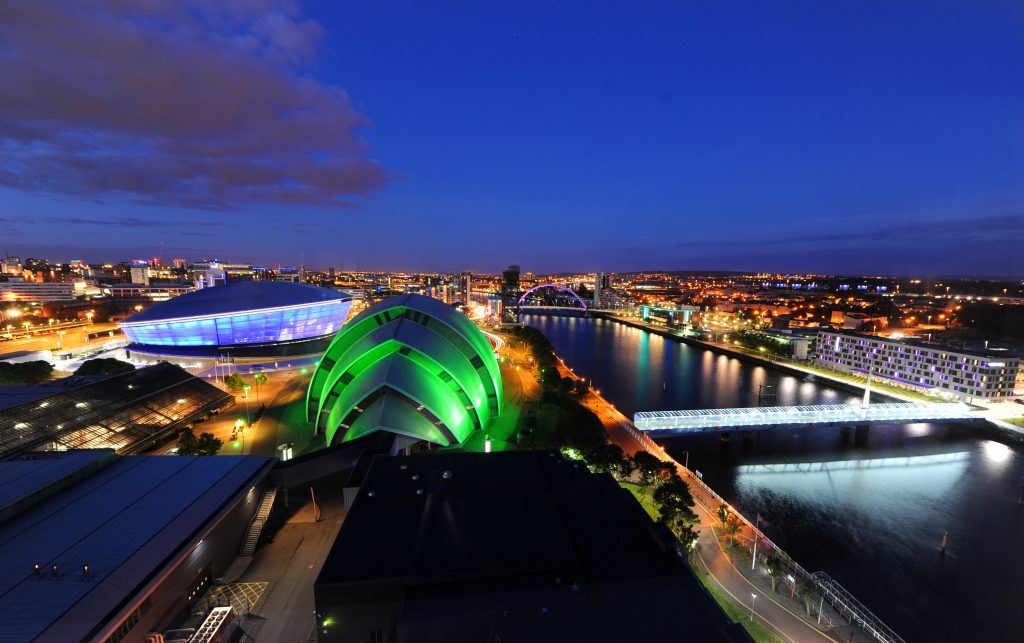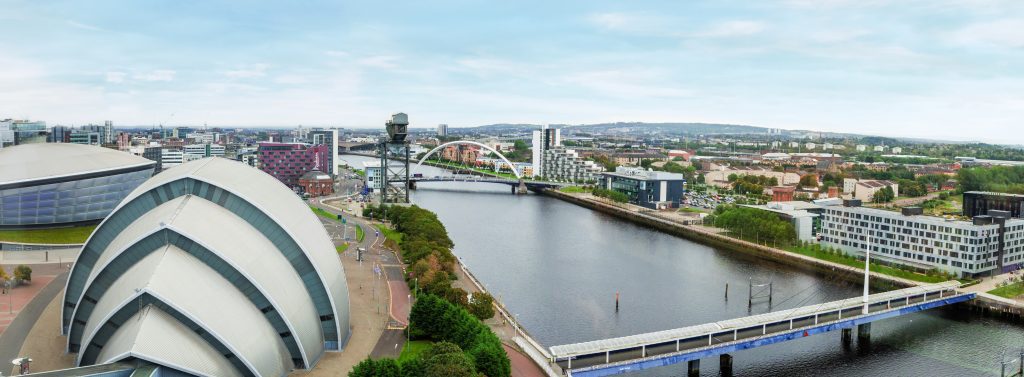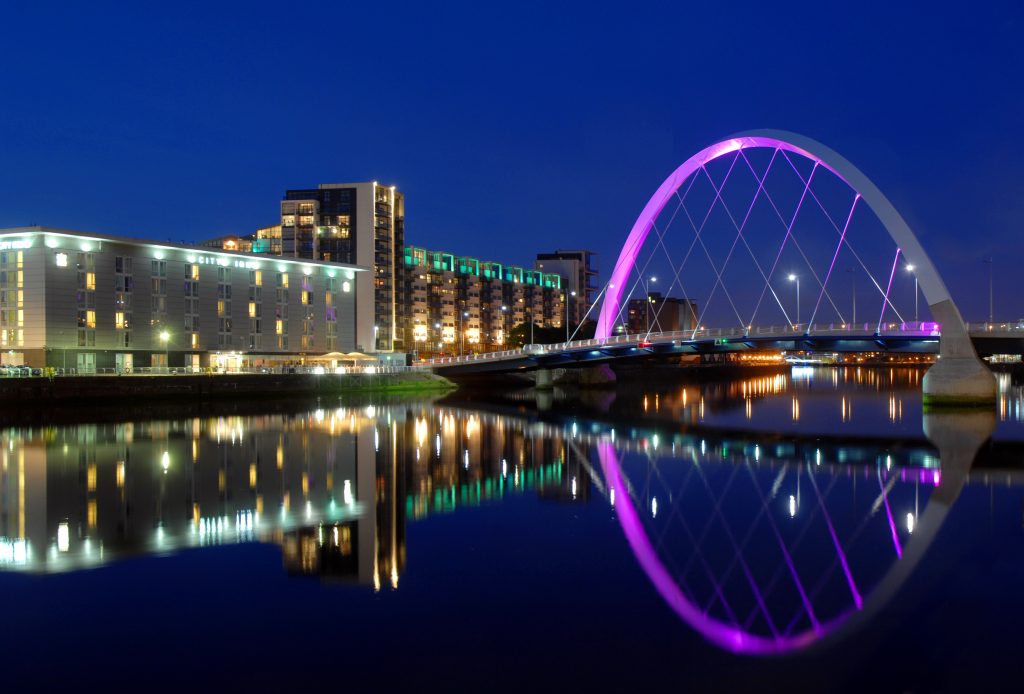September Director’s Blog: Rebuilding the Clyde
Kevin Rush, Glasgow City Region’s Director of Economic Growth, talks about the importance of the River Clyde to the Region and how it flows through our plans for a green recovery.
Rebuilding the Clyde
In late August 2023 the Scottish Government announced funding which will bring direct responsibility for Clyde Mission under the Region, for a dedicated team to scope and develop a masterplan in hand with £25 million capital funding for heat decarbonisation projects.
This is a great result for Glasgow City Region. Our role now in leading Clyde Mission will align with various strands of work we have already underway and with our ambitions for the Region in relation to economic growth, inward investment, sustainability and driving a more inclusive economy.
The Clyde was once the source of earlier prosperity and commerce for Glasgow and the industries it gave rise to. Today the river presents both a challenge and an opportunity for a city and a Region that continues to reinvent itself for the 21st century.
The Clyde has played a distinct part in Glasgow and the wider Region’s economic and social history and industrial development. Now it has the potential to play a leading role in an economic future and transition to net zero for the Region, Scotland and the UK.
The river has witnessed extensive public and private regeneration and investment over the past 20 years – kickstarted in 1988 by the most successful of all five UK Garden Festivals that cleared the way for new build headquarters for BCC and STV and supported the development of the new SECC campus. The SSE Hydro, opened in 2013 on the site of the former Queens Dock, attracts more than a million visitors a year and injects an estimated £131 million annually into Glasgow’s economy.
The river runs from the Firth of Clyde, one of the deepest sea entrance channels in northern Europe, right through the heart of the city centre. We have extensive available industrial dockside space; and Greenock Ocean Terminal is Scotland’s deepest container terminal with three ship-to-shore cranes which can lift 35-40 tonnes each. A City Deal funded enhanced quayside and visitor centre, Ocean Terminal, will further expand Greenock as Scotland’s cruise ship capital which welcomes over 100,000 visitors annually.
West Dunbartonshire’s £20 million state of the art District Heating Network, the first large-scale water source heat pump scheme of its kind in Scotland, extracts water from the Clyde to generate heat for buildings on the site of the former John Brown Shipyard.
Extensive City Deal funding is transforming the riverside with projects to remediate land, deliver new homes and commercial development, improve public realm and connectivity along and across the river, including three new bridges which will reconnect communities and create new corridors of job opportunities to the Region’s three Innovation Districts
The Innovation Districts are all based around the river, centred around our City Deal investment and have drawn billions of pounds of new infrastructure investment, much of which has been led by the Region’s universities.
The river is also a base to Glasgow’s thriving Financial Services district and the new build Barclays Campus, the most significant inward investment ever made in Scotland.

Challenges
From Clyde Gateway in South Lanarkshire through to Gourock at Inverclyde, over 100,000 people live in a footprint of just 500 metres on either side of the river across an 80 mile corridor. Within 500 metres of the river there are over 6,600 businesses, supporting around 160,000 jobs, and an estimated GVA of £6.5 billion to the Scottish economy. The acceleration of regeneration in the last ten years and recent City Deal investment is bringing new economic life and vibrancy to the area.
However, the river also brings challenges.
We know that communities close to the river are among the most disadvantaged in Scotland, with 18% of the population living within the 500 metre buffer in the top 5% SIMD areas. These communities also face issues with connectivity and proximity to Vacant and Derelict Land (VDL).
Unsurprisingly the river’s history has created some of its challenges. VDL is a key issue for Glasgow and the wider Region, with the city itself consistently with the highest concentration of VDL of any local authority in Scotland. VDL is often located in areas of deprivation, a product of deindustrialisation, with many VDL sites along the Clyde, sometimes in key locations. It is often a blight on a local area and presents a barrier to economic growth.
There are 264 vacant and derelict sites along the river corridor, 75% of the Region’s sites – equivalent in size to over 409 hectares – 15 times the size of the SECC campus.
But VDL is also an enormous economic opportunity and one we are determined to address.
At the Region we have been progressing an important piece of work to analyse our VDL – mapping where sites are located, identifying estimated land values, cost to bring it back into productive use and investigating possible funding streams. Work is also underway to better understand the condition of these sites, required access, decontamination and enabling works and of course development opportunities.
For the first time, we are able to demonstrate the economic value of investment in VDL, and as this work develops, it could have major implications for our investment strategy.
We also need to realise our vision for the Regional Metro – a transport solution to join the airport to the city centre, bring together communities and businesses along the river corridor, and which will help to support unrealised pockets of development.
Finally, the growing issue of climate change and of rising sea levels brings the risk of flooding to areas of the riverside. We also need to consider the condition of quay walls, much of which have fallen into disrepair. The Region has an Adaptation Strategy in place which proposes an engineering solution in the form of a tidal barrage to mitigate against the risk of flooding provide green energy from the river.

Opportunity
The Clyde is the greatest untapped development opportunity in western Europe. Freeing up swathes of VDL into productive use will support communities in areas of deprivation, create new jobs and draw enormous inward investment.
We need to radically rethink how we use the Clyde as a source of energy to support our heat decarbonisation plans. And we need to address the potential risk that tidal flooding presents, ensuring the river is resilient to climate change.
Our ambition must be bold and transformational.
We will now put a team in place at Glasgow City Region to develop a compelling masterplan for the river which addresses these issues and opportunities and offers creative solutions.
Ultimately delivering the final masterplan will require political support and enormous investment to place the Clyde once again at the economic heart of the Region, Scotland and the UK.
The challenges are huge but the benefits to be gained are enormous.
View all of our Director’s Blogs here.
